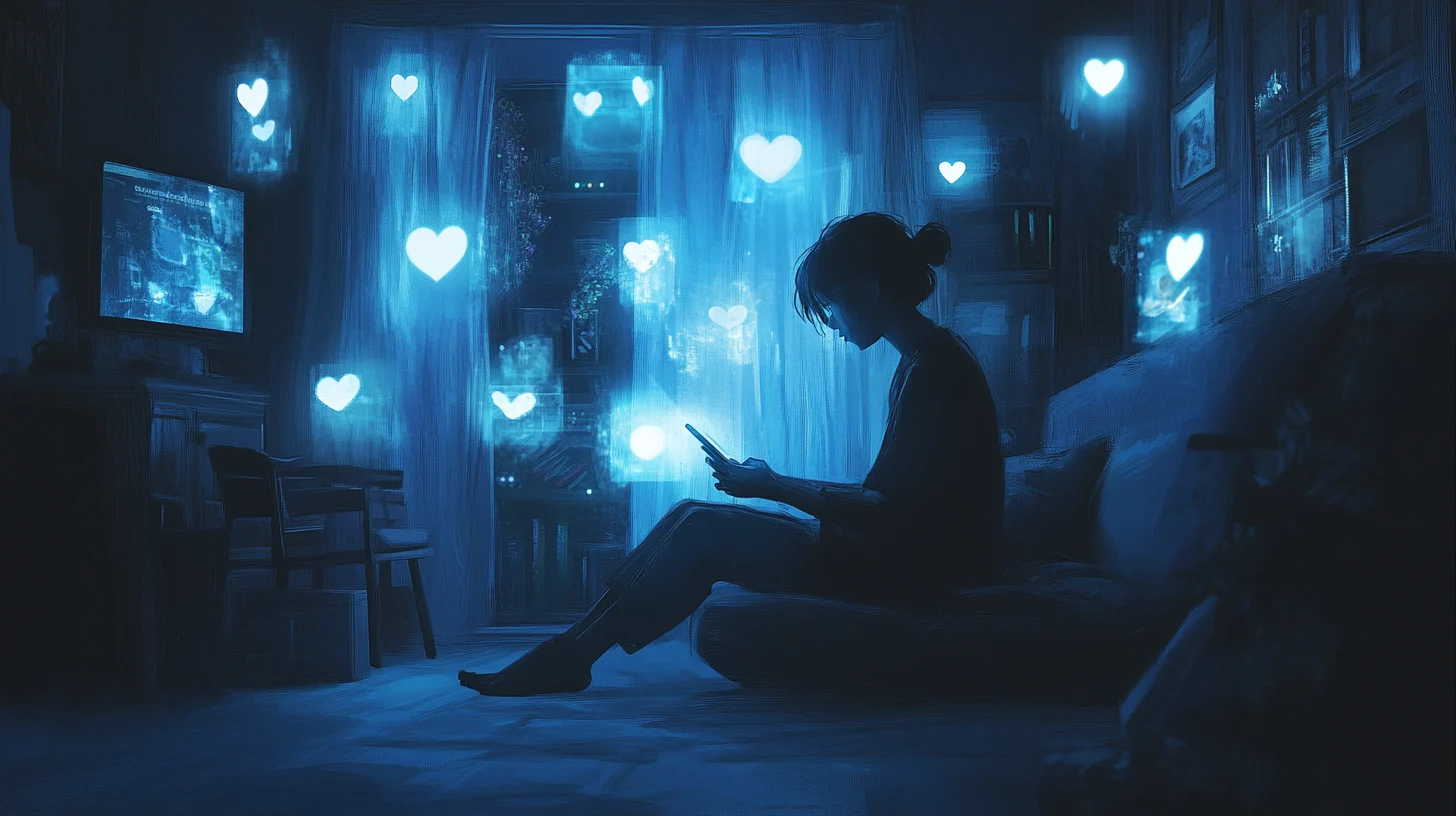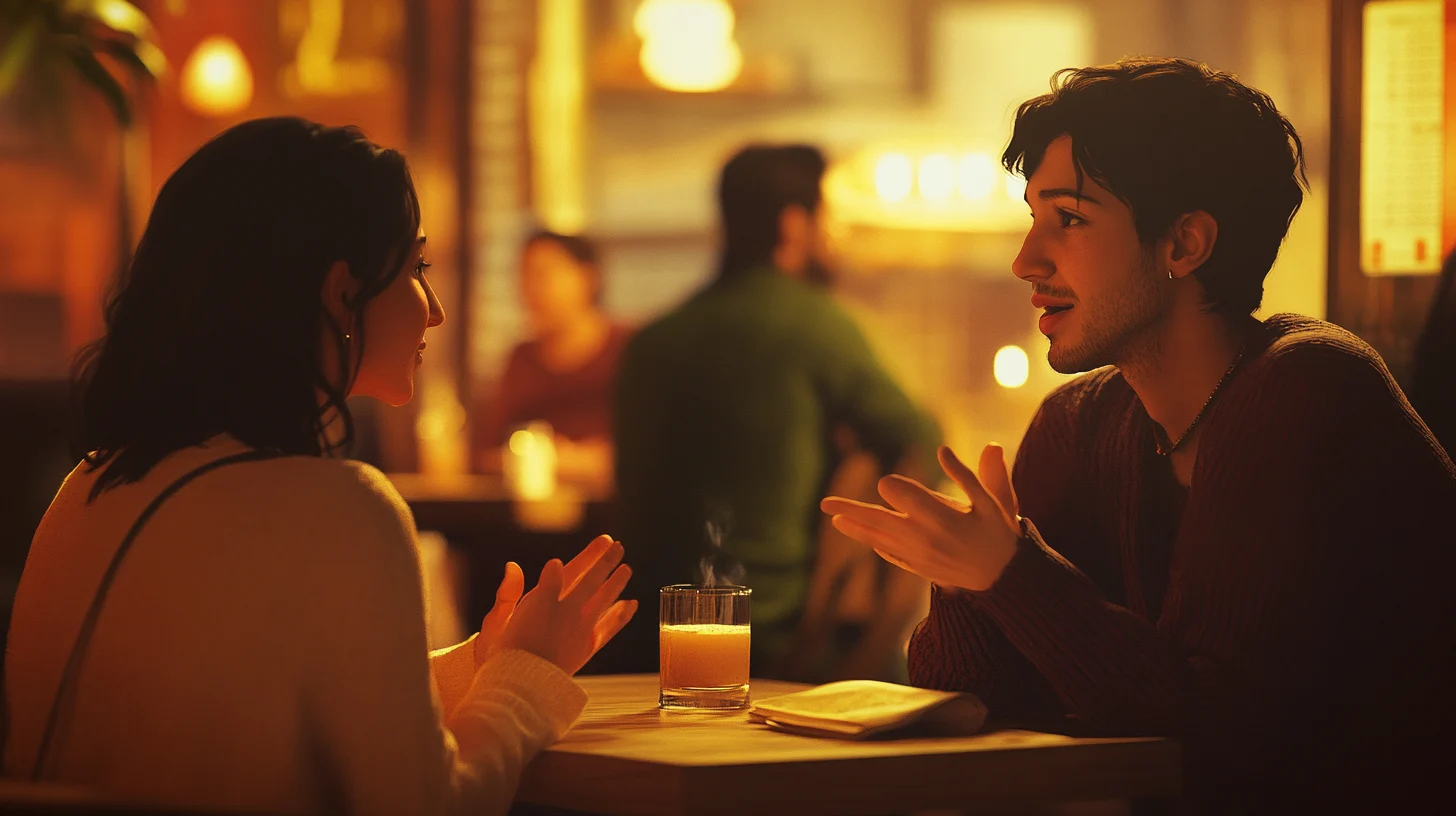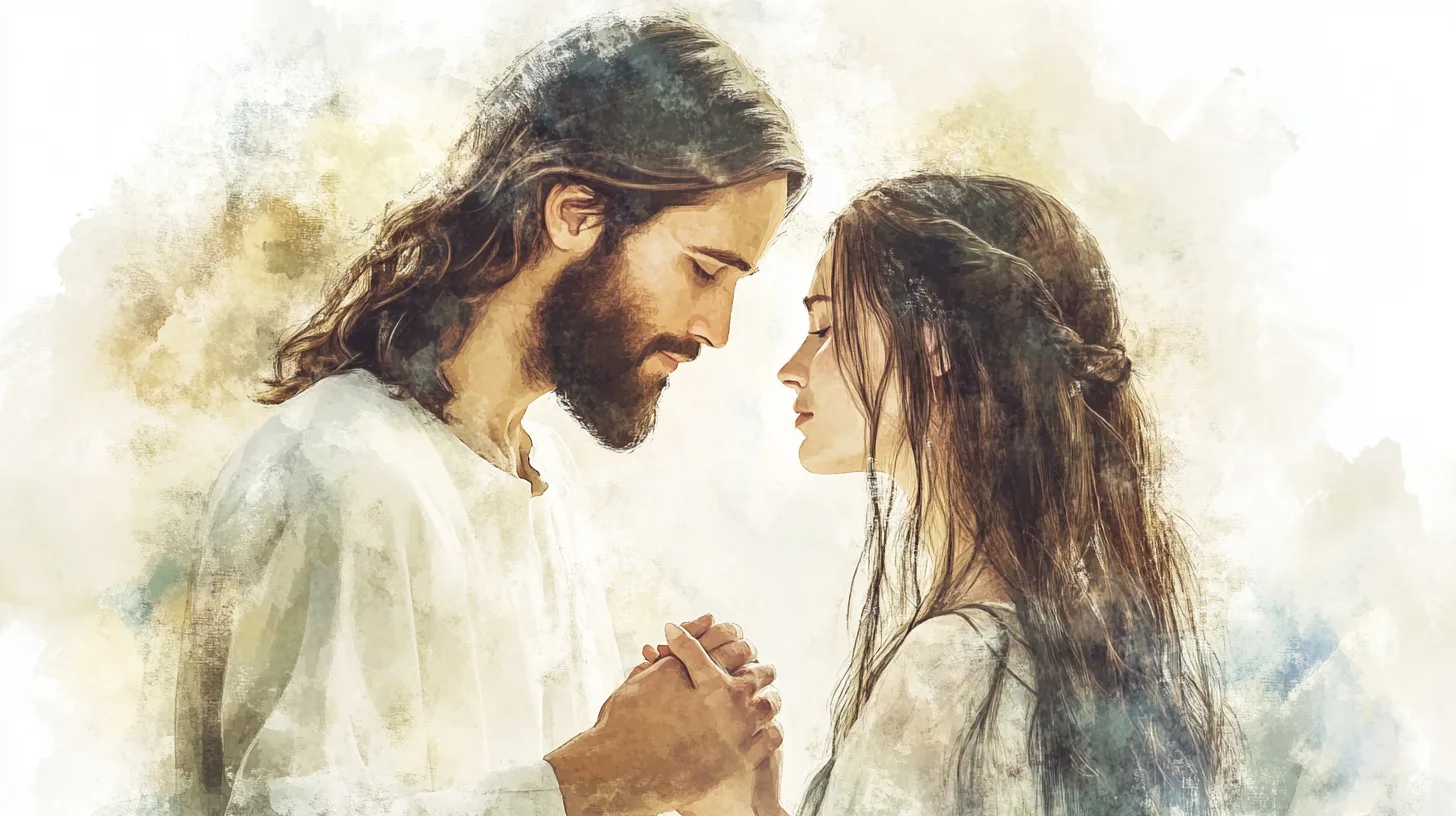We used to meet people without even thinking about it. At bookstores, in coffee shops, through mutual friends. Now, we match, swipe, unmatch, repeat.
Are dating apps really the only way to form connections? Or have we just forgotten how to recognize opportunity when it’s right in front of us?
Swipe Culture– Are We Really Connecting?#

Dating apps have changed everything. More choices. More access. More disappointment.
A 2023 study from the Pew Research Center found that 53% of dating app users feel burnt out, and only 12% feel their love lives have improved.
Psychologists call this the “paradox of choice”—when too many options make us hesitant to commit. We think we’re getting closer to love, but in reality, we’re just stuck in a loop.
“You were born with wings. Why prefer to crawl through life?”
— Jalal al-Din Rumi
But love has never worked like an algorithm.
The Fear of Missing Out#
Dating apps promise an infinite sea of possibilities, but are we actually happier with more choices?
Barry Schwartz, in The Paradox of Choice, explains that when we have too many options, we become less satisfied with any decision we make.
Instead of committing, we think:
- “What if I match with someone better?”
- “What if I settle too soon?”
- “What if my real soulmate is in the next swipe?”
This FOMO (Fear of Missing Out) keeps us stuck in the loop, but in reality, it’s an illusion. More options don’t make us happier—they make us hesitant.
“The secret to happiness is low expectations.”
— Barry Schwartz, The Paradox of Choice
What Changed? Love Used to Be… Well, Normal#
It wasn’t long ago that people met without effort. Now, meeting someone naturally feels like an outdated concept. Why?
Social Circles Got Smaller
Modern Era
The Lost Art of Mutual Introductions
Friendships used to be **bigger and more interwoven**. Extended families, neighborhoods, and community events played a role in matchmaking. Now? **People move more, socialize less, and rely on screens instead of real-world interactions.**Work & Social Life Blurred
Remote Work Era
Fewer Workplace Romances
With more **remote jobs and gig work**, casual office crushes are fading. People aren’t meeting **through daily routines anymore**, making apps feel like the *only* option.Stranger Danger Culture
Safety vs. Isolation
The Fear of Unsolicited Conversations
We’ve been taught to **avoid strangers**, making spontaneous conversations feel *unnatural*. The **"don’t talk to people you don’t know"** mindset, while rooted in safety, has also made **meeting someone offline feel uncomfortable**.
“A sea of people, yet no true connection. Perhaps we were never meant to seek love—but to be found by it.”
— Faiz Ahmed Faiz
How Do We Actually Connect? Science Has Answers#
Attraction isn’t just about looks or witty bios. It’s about shared moments, timing, and subconscious familiarity.
🧠 The Mere Exposure Effect
- The more we see someone, the more attractive they seem. Familiarity builds trust—which is why relationships often grow in classrooms, offices, or hobby groups.
(Zajonc, 1968, Journal of Personality and Social Psychology)
🗣️ The Role of Spontaneity
- Real chemistry happens when two people share an unscripted moment. The way they laugh. The way they react. The moments that can’t be rehearsed.
🔬 The Psychology of Deep Connection
- Dr. Arthur Aron’s famous “36 Questions That Lead to Love” experiment found that true bonding happens when people share meaningful conversations, not just common interests.
(Aron et al., 1997, Journal of Personality and Social Psychology)
But where do these moments happen if not on an app?
But do We Even Know How to Flirt Anymore?#
Flirting is a skill—and like any skill, if you don’t practice it in real life, you lose it.
Esther Perel, a world-renowned relationship therapist, explains that flirting isn’t about “winning” someone—it’s about playfulness, curiosity, and energy. Yet, dating apps have trained us to be direct and efficient:
- “What do you do for work?”
- “What are you looking for?”
- “What’s your love language?”
In real life, attraction isn’t a Q&A session. It’s the unspoken moments—the way you tilt your head, the light tease, the shared smirk over an inside joke.
“Flirting is the art of playfulness. It is the ability to bring curiosity, humor, and lightness into an interaction.”
— Esther Perel
📌 How to rebuild natural flirting skills:
- Drop the serious dating mindset and have fun talking to people—without an agenda.
- Observe body language: Hold eye contact, mirror their energy, notice their reactions.
- Make it light, not forced—a good flirt is an invitation to play, not a job interview.
The Role of Body Language in Attraction#

What if the reason dating apps feel shallow is because 93% of human communication is non-verbal?
Albert Mehrabian, a UCLA psychologist, found that in emotional conversations:
- 55% of communication is body language
- 38% is tone of voice
- Only 7% is actual words
This means when we rely on text-based chemistry, we’re missing almost everything that makes attraction real.
“93% of communication is non-verbal—body language and tone of voice matter more than the actual words.”
— Albert Mehrabian, UCLA Psychology
📌 What to notice when meeting people in real life:
- Do they lean in or pull back when you talk?
- Do they subtly mirror your movements (a sign of subconscious attraction)?
- Do their eyes light up when they laugh?
Apps give us words, but in real life, attraction is felt.
Where Do You Meet People Beyond Apps?#
We don’t need to reinvent the wheel—just rediscover what we already know.
Places Where Love Still Happens Naturally:
- 🏛 University & Learning Spaces – Classes, book readings, language exchanges.
- 🎭 Interest-Based Groups – Hiking clubs, music groups, coding communities.
- 🎲 Mutual Friends & Casual Gatherings – Social circles are still the most common way people meet.
- ☕ Public Spaces – Cafés, bookstores, markets. Yes, people still meet here.
“Go where the energy is. Show up, even when there’s no guarantee. Love is built in places, not in search bars.”
The Roundabout Way is Often Better#
The best relationships don’t start with a label. They grow out of shared experiences.
Why Slow-Build Attraction Works#
✅ It’s more natural.
- You don’t start by evaluating someone as a partner. You just exist in the same space until something shifts.
✅ No pressure, more authenticity.
- People aren’t performing like they do on a date. You see them as they truly are.
✅ Deeper trust, stronger chemistry.
- The foundation is built on real moments, not rehearsed lines.
“We are not meant to rush towards love. The heart must first recognize what the eyes cannot see.”
— Kahlil Gibran
Why the Best Connections Happen When You’re Not Looking#

Have you noticed that when you actively search for something, it feels impossible to find? But when you let go, it shows up unexpectedly? That’s the paradox of love.
Viktor Frankl, a psychologist and philosopher, described it this way:
“Happiness cannot be pursued; it must ensue as the unintended side-effect of one’s personal dedication to a course greater than oneself.”
— Viktor Frankl, Man’s Search for Meaning
This applies to relationships too. Some of the best love stories happen when people are focused on their own lives, passions, and interests—not looking for a partner.
📌 So what’s the shift?
- Instead of searching for someone, start living fully—hobbies, travel, deep friendships.
- Stop chasing connection and start creating an interesting life that naturally attracts like-minded people.
- Be open to love finding you in unexpected places.
What Happens When We Stop Relying on Algorithms?#
Imagine if tomorrow, dating apps disappeared.
What would change? Would people still meet? Of course—they did for centuries before apps even existed. But the way we meet would shift.
- We’d start noticing people in our daily lives again.
- We’d have to practice real-world social skills.
- We’d have to be more present in social settings.
Malcolm Gladwell, in Blink, explains that we’re “thin-slicing” people on apps—judging them in less than a second. But in real life, attraction is built over time.
“We are thin-slicing our dating choices, reducing people to quick impressions rather than deeper understandings.”
— Malcolm Gladwell, Blink
📌 What to try instead of relying on apps:
- Pause before swiping: Would you judge this person differently if you met them naturally?
- Give people a chance—not every connection is instant, but real chemistry builds.
- Embrace unpredictability—not knowing who you’ll meet makes love exciting.
So, Do We Ditch Dating Apps?#
Not necessarily. But we stop treating them as the only way.
A Balanced Approach to Modern Love#
- Use apps mindfully—but don’t rely on them entirely.
- Say yes to real-life opportunities.
- Be open to the unplanned.
“This moment is all there is.”
— Rumi
Why ‘Old-School’ Matchmaking is Making a Comeback#
Not everyone is abandoning dating apps—but many are looking for alternatives to random swiping.
And surprisingly, matchmaking is making a comeback.
- Private dating networks: Interest-based communities where people meet naturally (e.g., book clubs, travel groups).
- Curated matchmaking services: People are using human matchmakers instead of just algorithms.
- Friend introductions: More people are asking their social circles to set them up instead of waiting for an algorithm to do it.
Strong relationships come from “connectors”—people who bring others together in meaningful ways.
“Social connectors play a powerful role in shaping relationships—they introduce people who would have never met otherwise.”
— Malcolm Gladwell, The Tipping Point
📌 How to use modern matchmaking without apps:
- Tell your friends you’re open to being set up (many people would help if they knew).
- Join communities, not just dating sites. Shared interests build better foundations than swiping.
- Try events that bring like-minded people together—speed dating, creative meetups, or faith-based social circles.
Let Love Find You#
Maybe love isn’t about searching.
Maybe it’s about noticing—when it’s already right there.
💡 Practical Steps to Meet People Offline#
📍 Go to places where people share your interests.
💬 Be open to casual conversations.
🙌 Say yes to invitations—even if you don’t feel like it.
🌱 Let attraction grow naturally, rather than forcing it.
Love isn’t always loud. Sometimes, it’s quiet, waiting in the spaces between.
Love has never been a transaction. It’s been a rhythm, a dance, an unfolding.
Maybe it’s time we step outside the algorithm and let life surprise us.
